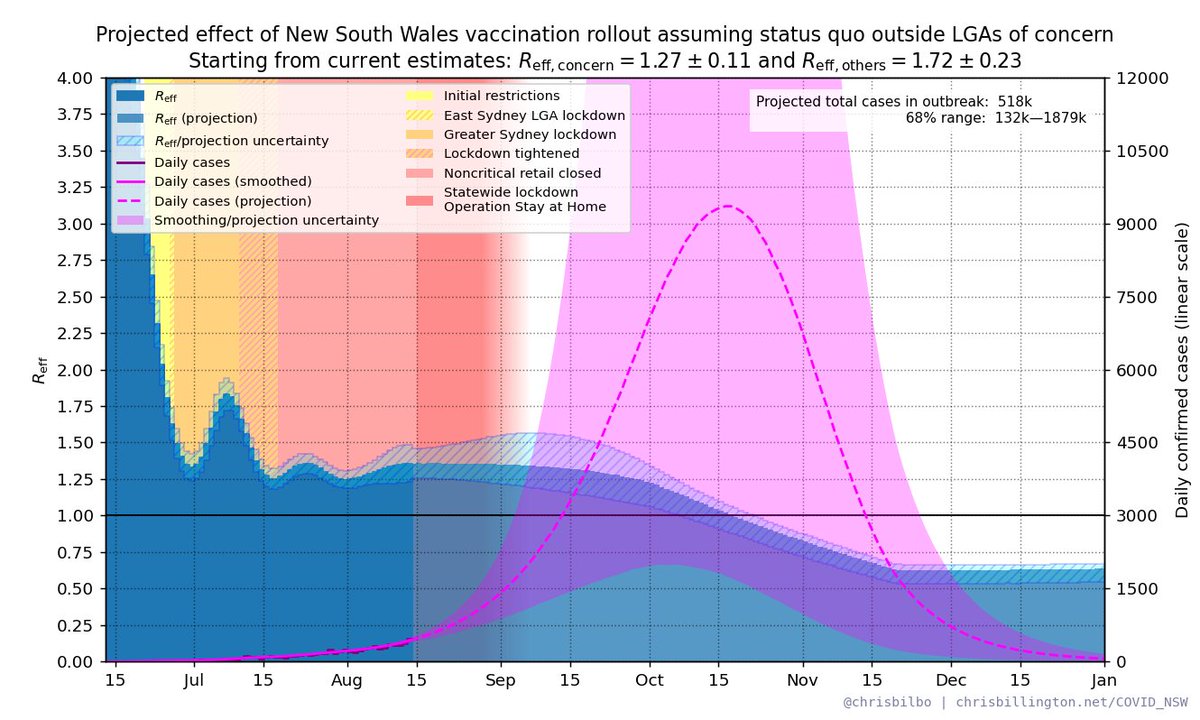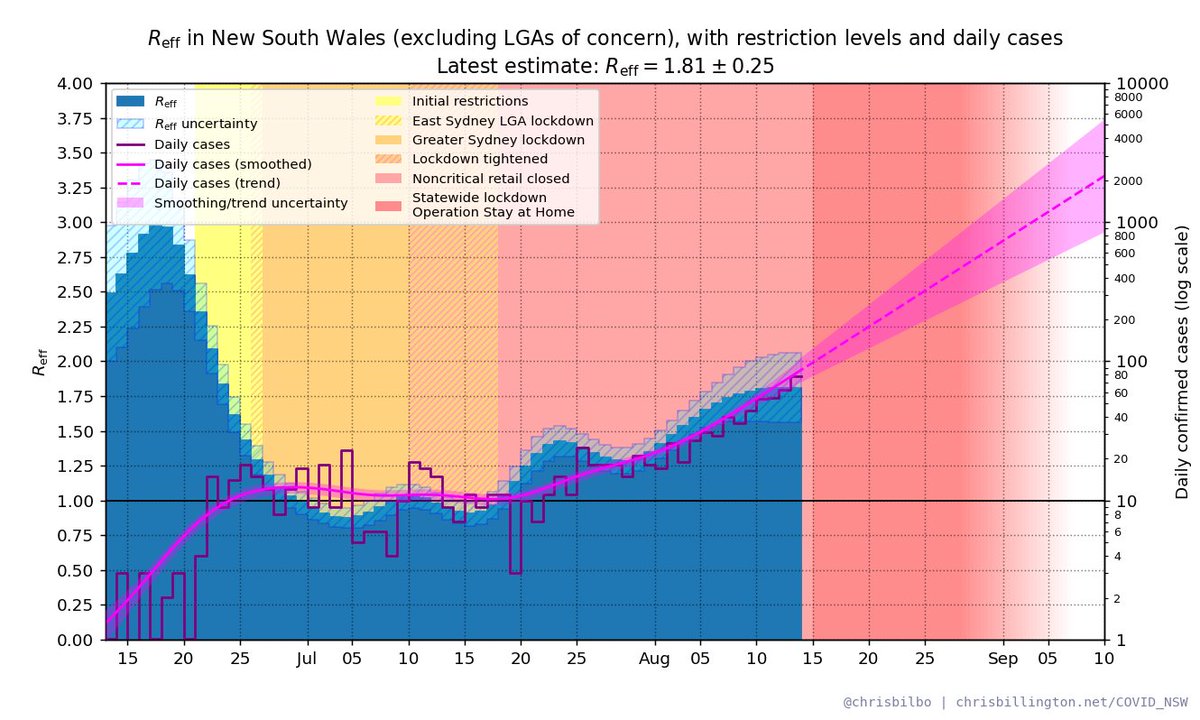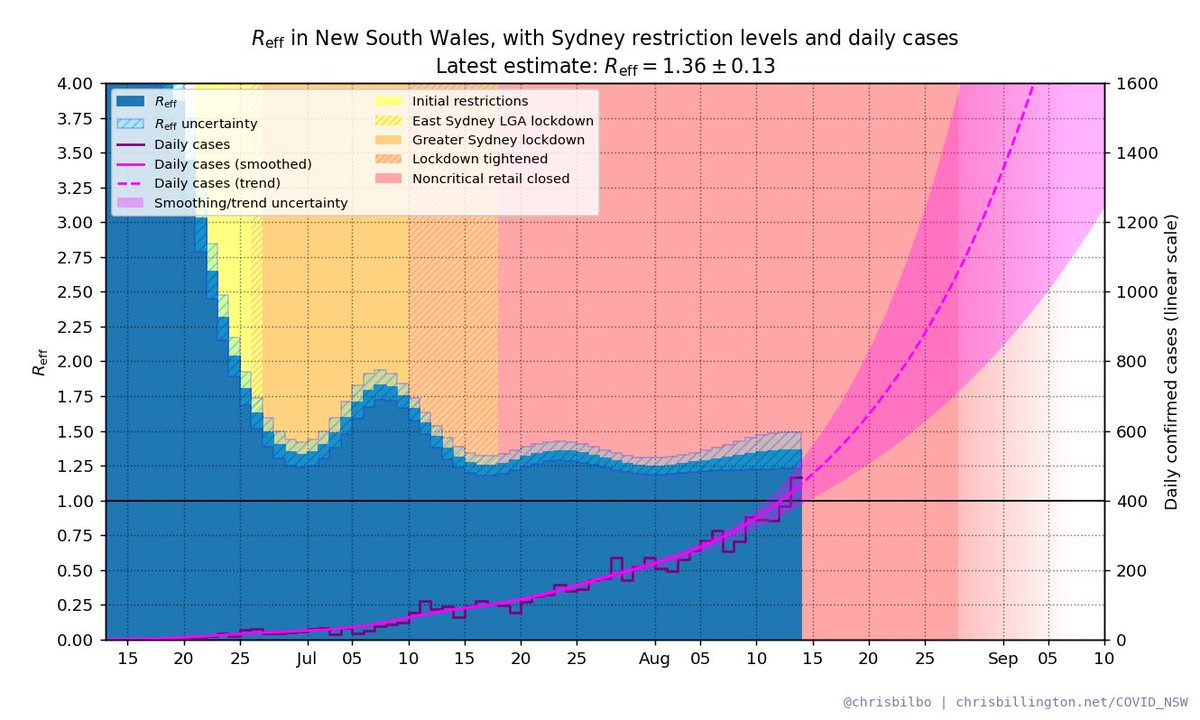
We have yet to see vaccines in NSW bring the transmission rate down. Why? A thread. 1/10
Here are these projections I've been making, where I start with the current R_eff, and assume it will decrease as vaccines in NSW ramp up and reduce transmission.
You may notice the problem - they project R_eff decrease steadily. But that's not what we're seeing. 2/10
You may notice the problem - they project R_eff decrease steadily. But that's not what we're seeing. 2/10

The problem is that the projection model treats NSW all the same, when in reality there are two very different settings. In the LGAs of concern, cases are higher and the growth rate lower. Elsewhere, cases are lower, but growth is higher (note: cases plotted on a log scale) 3/10 



Although the LGAs of concern are dominating the overall trend right now, the faster growth rate in the rest of NSW is contributing more and more to the overall growth rate over time as case numbers there rise. 4/10
This pushes the state's overall growth rate in case numbers gradually upward, away from the lower growth rate of the LGAs of concern, and toward the higher growth rate of the rest of NSW. 5/10
I can run exactly the same kind of projection of the vaccine rollout, but treat the LGAs of concern and the rest of NSW as if they were two separate outbreaks, starting from their individual R_eff values that we see now, projecting forward then adding them together. 6/10
If I do that, I see that in the short-term, the decrease in the overall R_eff from vaccines is almost exactly cancelled out by this effect of the higher R_eff outside the LGAs of concern slowly taking over: see the flat projection for R_eff in the short-term below. 7/10 

The longer-term (very concerning) part of the above projection is not realistic, since the NSW government will presumably impose extra restrictions on these areas once cases are higher (but knowing that, why not do it now...?) 8/10
But I hope this goes some way to explaining why we're not seeing vaccinations affect the overall growth rate quite yet. There is no overall growth rate. There are two Sydneys right now, and overall growth won't be low until it's low everywhere. 9/10
More info on some of these projections can be found on my page here: chrisbillington.net/COVID_NSW.html 10/10
As @DanDbab points out, most of the discrepancy at the moment is explained by three regional LGAs, *not* the areas of greater Sydney outside the LGAs of concern as I assumed.
https://twitter.com/DanDbab/status/1426496544757321728
This changes things a bit, as lockdowns are more recent in these areas. High growth rates without lockdown are no surprise at all, and we should wait to see the effects of regional lockdowns before drawing any more conclusions.
• • •
Missing some Tweet in this thread? You can try to
force a refresh





















